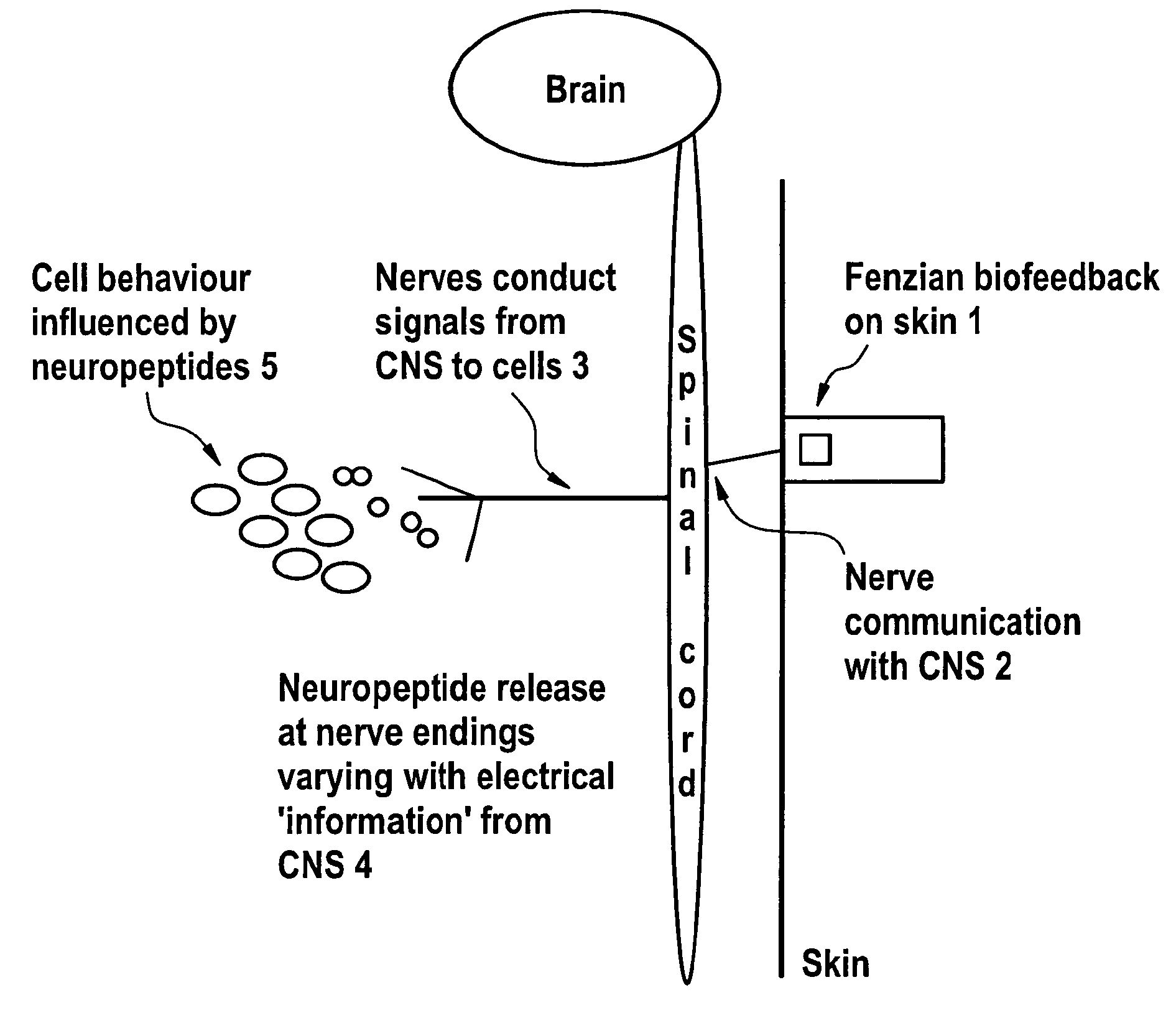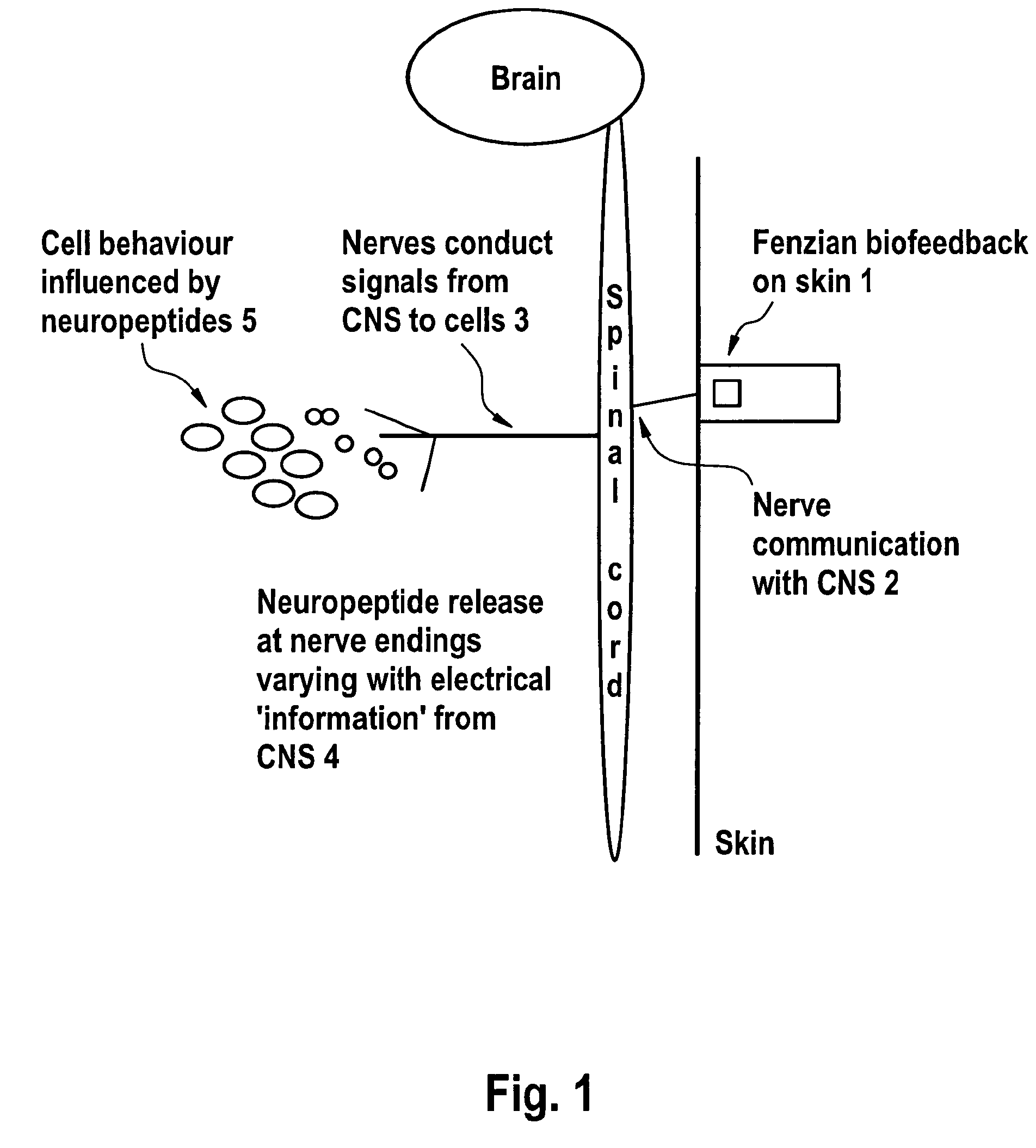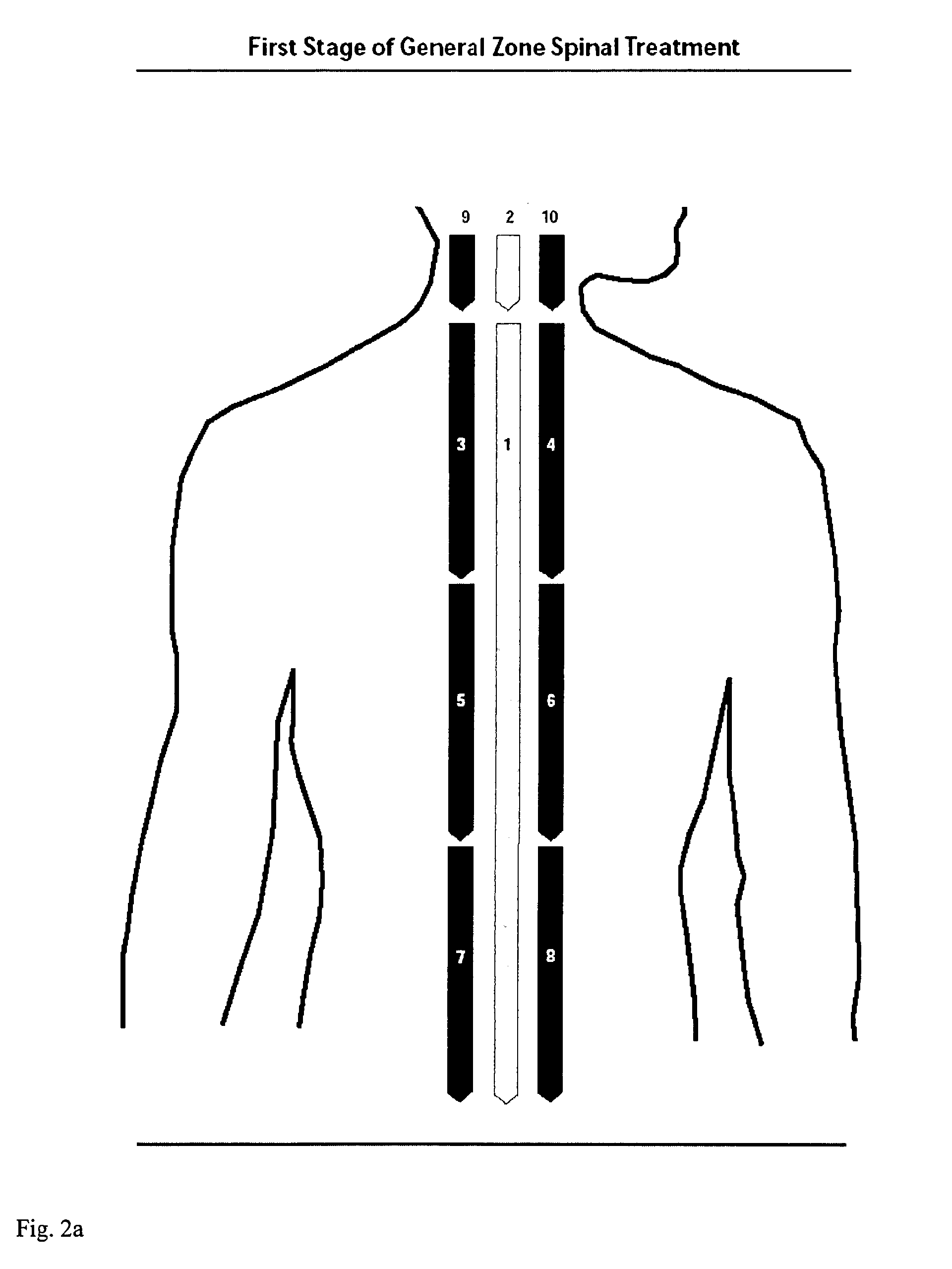Plurality of electrons for use in the restoration of a patient's health
a technology of electrons and patients, applied in the field of non-invasive stimulatory, can solve the problems of expensive development of new drugs for pharmacological treatmen
- Summary
- Abstract
- Description
- Claims
- Application Information
AI Technical Summary
Benefits of technology
Problems solved by technology
Method used
Image
Examples
case 1
[0107]The patient (female, born in 1929) initially presented in 1986 with a febrile illness, pneumonitis unresponsive to antibiotics and a migrating arthritis. At this point she had a butterfly erythematous rash on her face and the diagnosis of systemic lupus erythematosis (SLE) was made. At the time she responded to high dose steroids.
[0108]Over the past 17 years she has had recurrent episodes of SLE and has had every manifestation of the disease including poly-arthritis, pleurisy, pericarditis, nephritis, conjunctivitis. She suffered from episodes of severe anaemia and thromocytopaenia. She has averaged four hospital admissions per year as a result of symptoms of SLE or as a result of the complications of drug therapy.
[0109]Her drug regimen has included corticosteroids at varying doses since 1986 as the mainstay of treatment augmented at different times by a variety of non-steroidal anti-inflammatory drugs, azathioprine, plaquenil and methotrexate and ipratropium and fluticasone i...
case 3
Orthopaedic
[0127]JM is a 22 year old ‘family support social worker’
[0128]She had a compound Monteggia fracture of her right (dominant) arm.
History:
[0129]JM had been completely well until a driver travelling towards her lost control and struck her car head-on.
[0130]After initial management and debridement of the wound, it was plated two days after the accident.
[0131]Over the next three months there was no evidence of callus or new bone formation and she was told to expect to retain the internal fixation for life.
[0132]In addition to the right arm injury, she had had a marked seatbelt ‘burn’ on her sternum, which remained tender.
Past Medical History / Family History:
[0133]There was nothing of note in her previous medical or family history. Both her sisters were fit and well. She lives with her boyfriend.
Medication
[0134]She was on analgesics to contain the pain.
On Examination:
[0135]She had a prominent surgical scar which had healed well. Hand movements were good, but with discomfort on w...
case 4 cardiac
[0139]CE is a property developer whose life was limited by angina.
History
[0140]CE had slowly developed angina over the previous three years when an angiogram confirmed three vessel coronary artery disease (including a 40% distal stenosis of the LAD). He was initially recommended angioplasty but this was revised to coronary artery bypass graft and measures to reduce his cholesterol level (from 8 / 9). At this time he would experience chest tightening after about 50 yards on level ground with marked worsening climbing stairs.
Past Medical History:
[0141]There was no related past medical or family history. He was not diabetic and only very occasionally had a cigar which he said he did not inhale. He was not hypertensive. He had previously had gout. No known allergies.
Family History:
[0142]His mother died at 86; father died at 59 of stomach cancer.
[0143]He is married with two fit adult children.
Medication:
[0144]Atenolol 50 mg; Allopurinol 300 mg og. Lipitor 200 mg od.
[0145]On examination he ...
PUM
 Login to View More
Login to View More Abstract
Description
Claims
Application Information
 Login to View More
Login to View More - R&D
- Intellectual Property
- Life Sciences
- Materials
- Tech Scout
- Unparalleled Data Quality
- Higher Quality Content
- 60% Fewer Hallucinations
Browse by: Latest US Patents, China's latest patents, Technical Efficacy Thesaurus, Application Domain, Technology Topic, Popular Technical Reports.
© 2025 PatSnap. All rights reserved.Legal|Privacy policy|Modern Slavery Act Transparency Statement|Sitemap|About US| Contact US: help@patsnap.com



